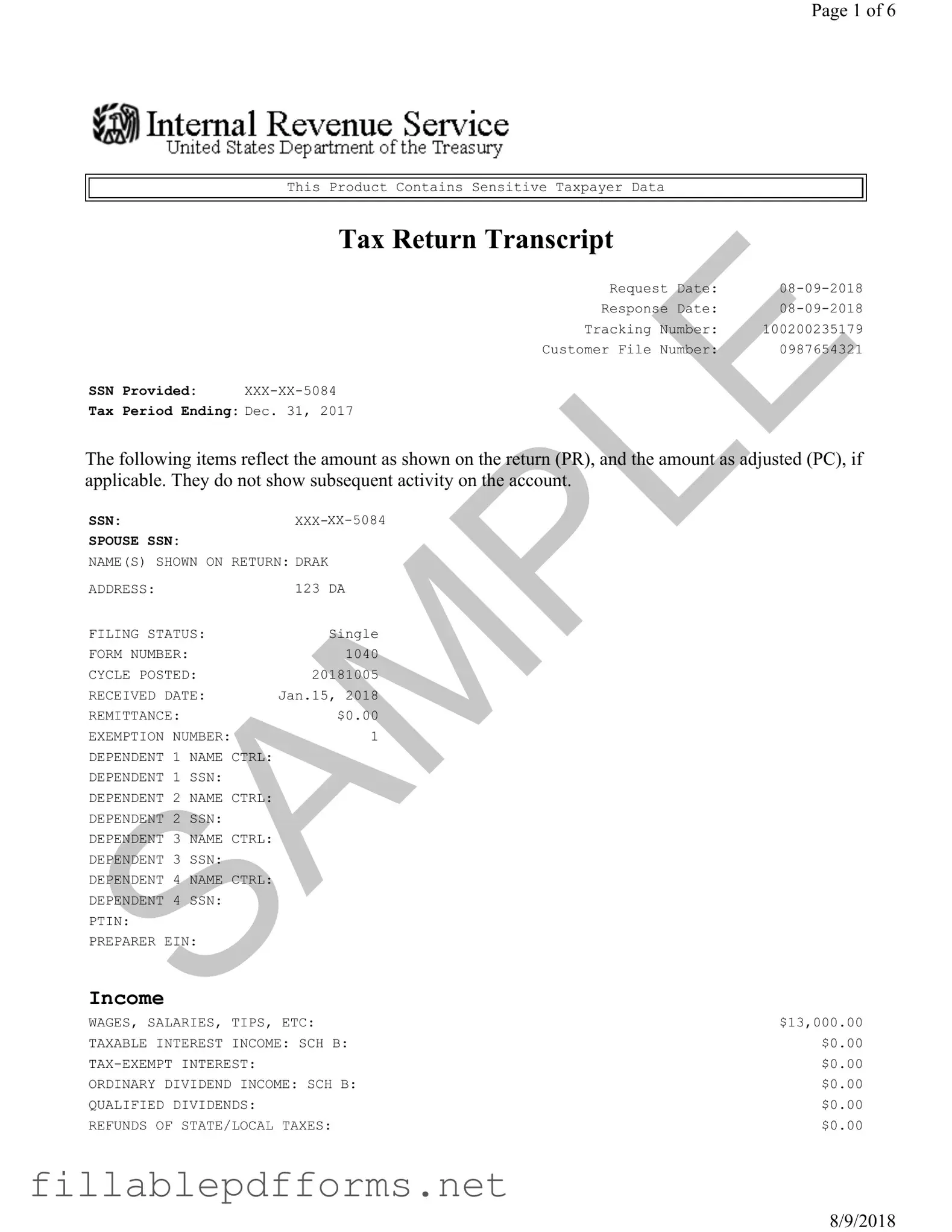The Sample Tax Return Transcript form provides essential information about an individual’s tax return for a specific tax period. This document includes a variety of details, such as the taxpayer's Social Security Number (SSN), filing status, and income sources. For instance, it outlines wages, salaries, and business income, giving a clear snapshot of earnings. Adjustments to income are also highlighted, showing deductions that can affect the adjusted gross income. Additionally, the form summarizes tax liabilities, including tentative tax amounts and credits available to the taxpayer. It also indicates any payments made towards taxes, as well as any amount owed or refund due. The form is particularly useful for individuals needing to verify their tax information for loans, financial aid, or other purposes. With its structured layout, the Sample Tax Return Transcript allows taxpayers to easily access critical information from their tax returns, ensuring they have the necessary details at their fingertips.
